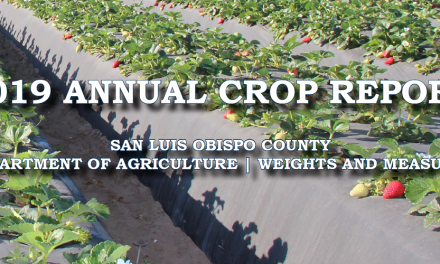San Luis Obispo County officials prepare for potential flooding as multiple reservoirs reach capacity
By Hayley Mattson and Camille Devaul
SAN LUIS OBISPO COUNTY — A powerful storm system has been pummeling the Central Coast once again with heavy winds and rainfall throughout the week. According to the latest figures as of Wednesday morning, Paso Robles has received 26.38 inches of rain this season, with Atascadero recording slightly more at 27.89 inches.
The authorities are closely monitoring the reservoir levels in the area. Salinas has reported 107.6 inches of water in its reservoir, with Lake Lopez close behind at 98.6 inches. Lake Nacimiento presently holds 85.0 inches of water, while San Antonio and Whale Rock reservoirs report 50.0 and 100.0 inches, respectively.
There are reports that Tuesday’s downpour may cause Lopez Lake to overflow for the first time in 25 years, according to county officials. The Office of Emergency Services has attributed the rapid increase in the lake’s water level from 24 percent capacity at the beginning of January to full capacity in less than three months to consecutive storms this year.
Lopez Lake, located near Arroyo Grande, was at 92.2 percent capacity as of last Friday afternoon, according to SLO County Public Works data. This is a significant increase from its 22 percent capacity in December and 24 percent capacity at the beginning of January. Multiple atmospheric river storms in January and March have brought it close to spilling for the first time in more than two decades.
The last time the reservoir spilled was in 1998. In its more than five decades of operation, the lake has spilled a total of 18 times. As of Friday afternoon, the water level at Lopez Lake stood at 518 feet, while the spillway level was at 522 feet, according to Public Works data.
Established in 1968, the reservoir can store a maximum of 49,388 acre-feet of water. As of Friday, it contained 45,751 acre-feet of water. In addition to providing water to residents of the Five Cities area of SLO County, Lopez Lake is also used for recreational activities such as boating, camping, fishing, and mountain biking.
SLO County Public Works has been monitoring the spillway, which will direct overflowing water into Arroyo Grande Creek, to ensure it remains in good condition through regular maintenance and inspections. When the reservoir spills, the Public Works Department will closely monitor stream gauges and perform on-site monitoring to watch for potential flooding along the creek area.
Oceano, located near the Arroyo Grande Creek Levee, has already been at risk of flooding during this winter’s extreme storms. Officials issued evacuation warnings and, in some cases, orders as water levels rose in the area. If an evacuation is necessary due to an extreme influx of water in the creek during the next storm, the county is prepared to issue orders immediately.
Lopez Lake would be the third local reservoir to reach capacity this winter. Earlier this week, Whale Rock Reservoir near Cayucos spilled for the first time in 18 years. The last time Whale Rock was close to capacity was in May 2019, when it reached 90 percent. However, by the afternoon of March 11, the reservoir reached 111 percent capacity.
Santa Margarita Lake has also been overflowing into the Salinas River since Jan. 9. As of Friday, it was at 105 percent of capacity. These reservoirs reaching capacity highlight the substantial impact of this winter’s storms on the region.
As the storm system continues, county officials and emergency services remain vigilant to address any potential flooding and ensure public safety. Residents are encouraged to stay informed about weather conditions and follow any guidance or evacuation orders issued by local authorities. The combined efforts of the county, Public Works, and emergency services aim to minimize the risks associated with the overflowing reservoirs and protect the communities living in these areas.















